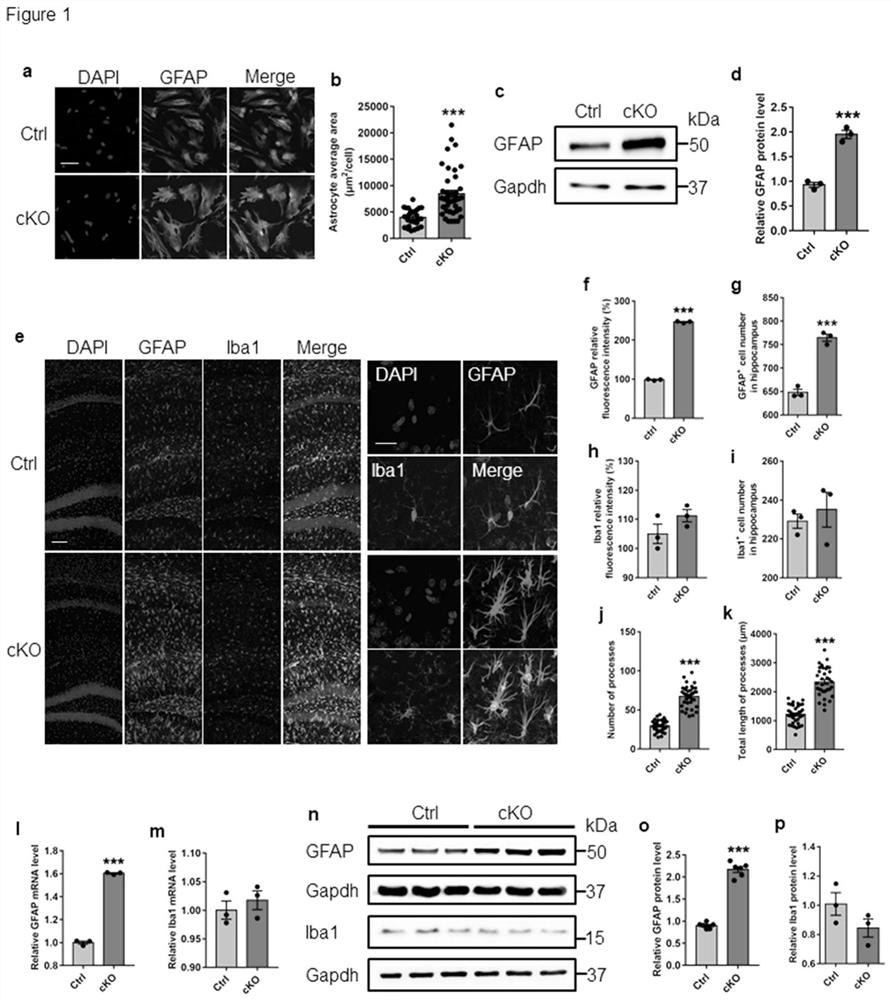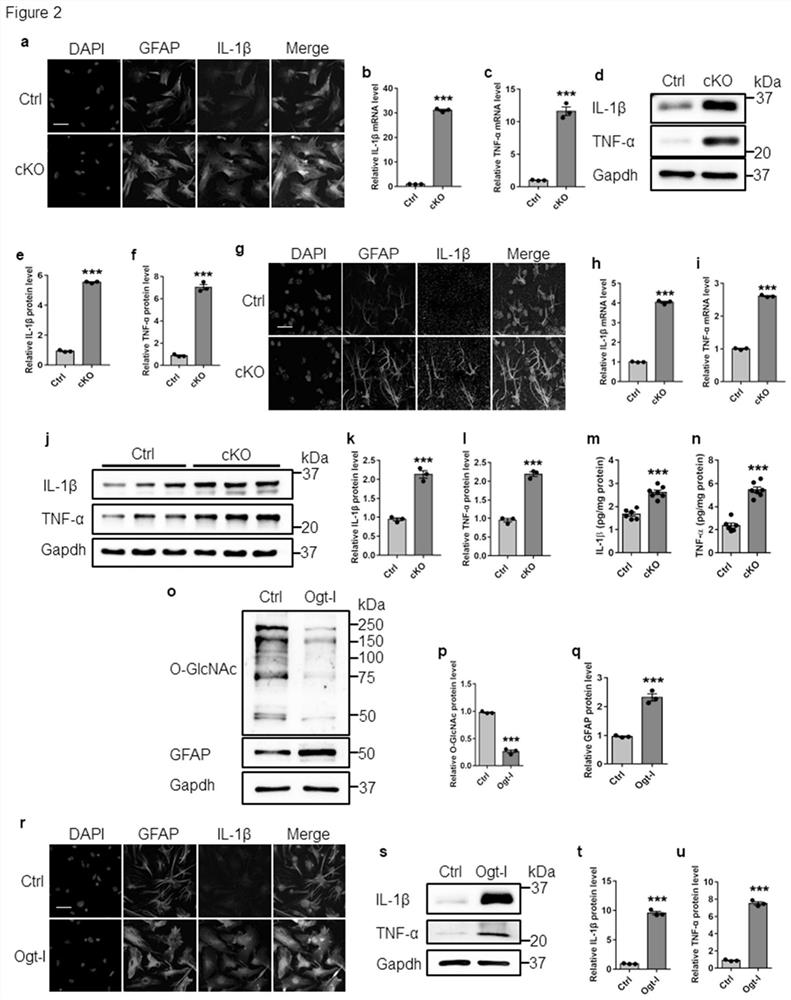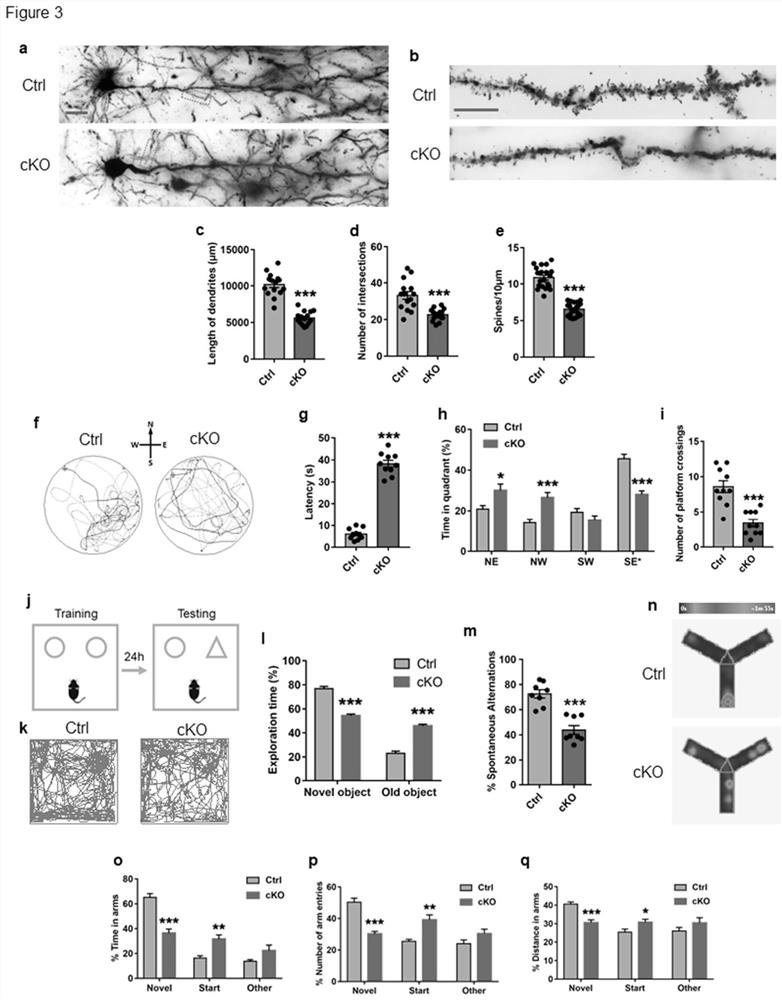Application of N-acetyl-D-glucosamine in preparation of drugs for preventing and treating Alzheimer's disease
A technology of glucosamine and acetyl group, applied in the application, drug combination, antipyretics and other directions, can solve the problem that the effect of neurodegenerative diseases has not been reported, and achieves improvement of cognitive memory impairment, inhibition of neuroinflammation, and improvement of cognition. effect of function
- Summary
- Abstract
- Description
- Claims
- Application Information
AI Technical Summary
Problems solved by technology
Method used
Image
Examples
Embodiment 1
[0031] Example 1 The effect of Ogt deficiency on the activation of astrocytes in vivo and in vitro.
[0032] 1. Method
[0033] Ogt floxp / floxp Mice with Glast-Cre ERT2 Mice were crossed to produce inducible Ogt conditional knockout (cKO) mice. Male mice were injected with tamoxifen 100 mg / kg or control agent (intraperitoneal injection, once a day, for 5 consecutive days) at 7 weeks, and after 8 weeks A series of experiments were carried out with 3 rats in each group.
[0034]Isolation and culture of primary brain astrocytes from adult mice: Adult mice were dislocated cervically, quickly decapitated, dissected hippocampal and cortical tissues in pre-frozen PBS, and carefully peeled off the meninges under a stereomicroscope. After washing with cold PBS, the tissue was minced with a scalpel and then rotated with 0.125% trypsin at 37°C for 15 minutes. Slowly rotate with 1000 U / mg papain for 15 minutes at 37°C, and then mix well with 20 μl DNase I (50000 U / ml). The cell suspe...
Embodiment 2
[0043] Example 2 Can the activation of astrocytes cause inflammatory response after Ogt deficiency.
[0044] 1. Method
[0045] Enzyme-linked immunosorbent assay (ELISA): hippocampal tissue homogenate was lysed in ice buffer (500μl, 20mM Tris-HCl, 150mM NaCl, pH7.4, 1% Triton X-100, 1mM EDTA, 1x protease inhibitor tablet) Centrifuge at 14000g for 15min at 4°C, and collect the supernatant. 100 μl of cell and tissue supernatants were used for enzyme-linked immunosorbent assay of inflammatory factors IL-1β and TNF-α using an ELISA kit (Thermo Fisher Scientific).
[0046] Preparation of Ogt inhibitor (Ogt-I): Prepare Ogt inhibitor (5mM) stock solution with DMSO, add Ogt inhibitor to the medium with a final concentration of 20 μM, and co-culture with purified adult astrocytes for 72 hours, An equal volume of PBS was added as a control.
[0047] 2. Results
[0048] To determine whether activated astrocytes release inflammatory factors, IL-1β immunostaining was performed with cul...
Embodiment 3
[0051] Example 3 Effects of Activated Astrocytes on Hippocampal Neurons and Cognitive Function of Mice after Ogt Deficiency
[0052] 1. Method
[0053] Golgi staining of neurons and quantitative analysis of dendritic branches and spines: Golgi staining was performed according to the manufacturer's protocol (FD neurotechnologies, PK401). Briefly, fresh mouse brains were stored in Golgi-Cox solution in the dark for 14 days, and then incubated with 30% sucrose for 2 days at 4°C. Coronal sections were cut to 200 μm thickness with a cryostat. Sections were collected, dehydrated in absolute alcohol, washed in xylene, and covered with resin medium for mounting in sequence. Z-axis imaging of dendritic branches and dendritic spines of 6 to 8 pyramidal neurons in the CA1 region of each mouse was performed with an Olympus light microscope. Only cells with cell bodies in the section that were clearly stained, had no broken dendrites, and did not overlap adjacent cells were selected for...
PUM
 Login to View More
Login to View More Abstract
Description
Claims
Application Information
 Login to View More
Login to View More - R&D
- Intellectual Property
- Life Sciences
- Materials
- Tech Scout
- Unparalleled Data Quality
- Higher Quality Content
- 60% Fewer Hallucinations
Browse by: Latest US Patents, China's latest patents, Technical Efficacy Thesaurus, Application Domain, Technology Topic, Popular Technical Reports.
© 2025 PatSnap. All rights reserved.Legal|Privacy policy|Modern Slavery Act Transparency Statement|Sitemap|About US| Contact US: help@patsnap.com



